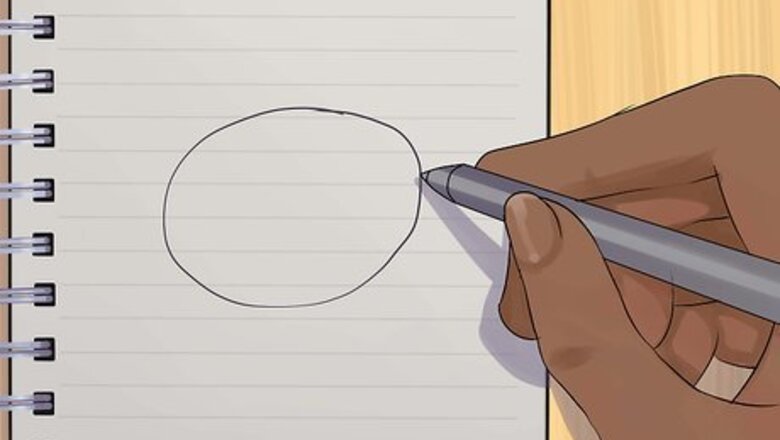
views
Drawing the Cell Membrane and Nucleus
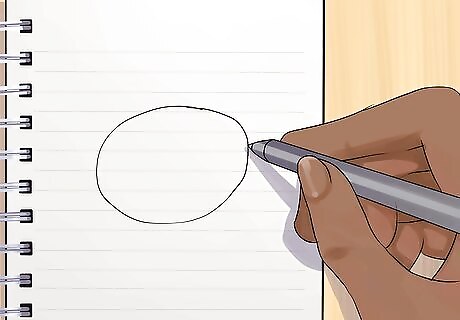
Draw a simple circle or oval for the cell membrane. The cell membrane of an animal cell is not a perfect circle. You can make the circle misshapen or oblong. The important part is that it does not have any sharp edges. Also know that the membrane is not a rigid cell wall like in plant cells. Cell membranes do allow molecules to pass in and out of animal cells. Make the circle large enough to decipher all the organelles you draw inside.
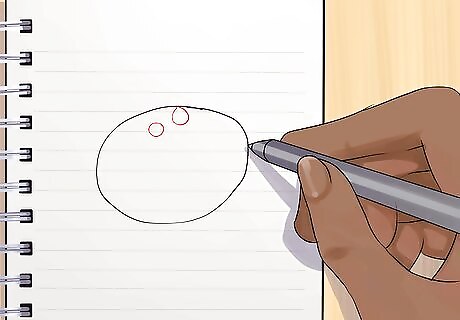
Draw a pinocytic vesicle. Detailed animal cell models may also include a pinocytic vesicle on the cell membrane. This will appear as a small bulbous shape. It should push into the outer circle of the cell membrane without breaking it. In pinocytosis the cell membrane wraps around extracellular fluids (those outside the cell). It then pulls the fluid into the cell for digestion or absorption. This is why you draw the vesicle as a bulbous shape that the membrane has wrapped around.
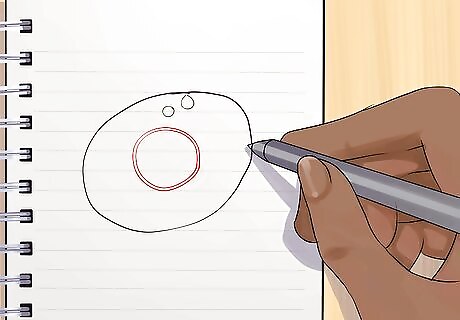
Draw two circles for the cell nucleus. The nucleus is one of the larger structures of the cell. Form the nucleus by drawing two circles—a larger circle that takes up around 10% of the cell with a slightly smaller circle inside it. The nucleus of an animal cell has pores in it called nuclear pores. To represent these pores, erase three or four small sections of each circle. Then connect the outer lines to the inner lines. The finished product will resemble curved cylinders that don't quite touch. This outer shell of the nuclear membrane is also called the nuclear envelope. To make a highly detailed cell model, put several dots on the outside of the nuclear membrane to represent ribosomes that attach to the membrane.
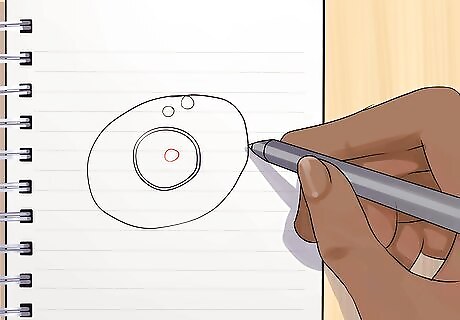
Draw a small shaded circle for the nucleus. The nucleolus is at the center of the nucleus and makes ribosomal sub-units that combine elsewhere in the cell. Represent the nucleolus with a small shaded circle.

Draw a squiggle for the chromatin material. Most of the rest of the nucleus interior should appear as one big squiggle. This squiggle represents the chromatin material such as DNA and proteins.
Drawing the Other Cell Organelles
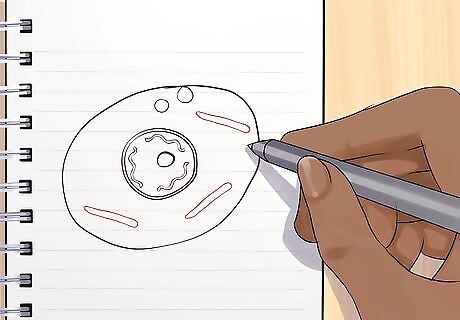
Draw rod-shaped ovals for the mitochondria. The mitochondria are the powerhouses of the cell. Draw them by making two or three large, rod-shaped ovals in the cell but outside the nucleus. Each mitochondrion (singular) should contain an enclosed shape with many ridges and switchback lines. This shape represents the mitochondrial cristae or inner folds of the organelle's membrane that provide more surface area to carry out processes. Leave a gap between the oval of the outer membrane and the inner membrane.
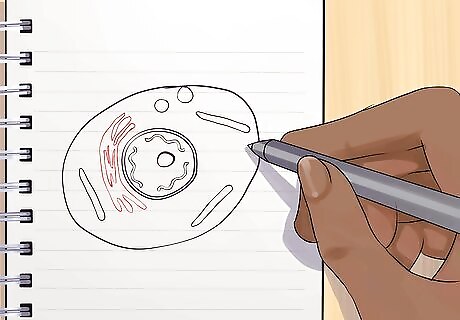
Draw finger-like shapes for the endoplasmic reticulum. Starting at one edge of the nuclear membrane, draw a large shape that extends out of the membrane with several finger-like shapes pointing to each side before reconnecting to the nucleus. This entire shape is the endoplasmic reticulum. The shape should be fairly large because the endoplasmic reticulum can take up as much as 10% of the volume of the entire cell. Animal cells have both a smooth and a rough endoplasmic reticulum. To make the rough endoplasmic reticulum, place dots on the outside edge of the finger-like shapes on one side of the endoplasmic reticulum. These dots represent ribosomes.
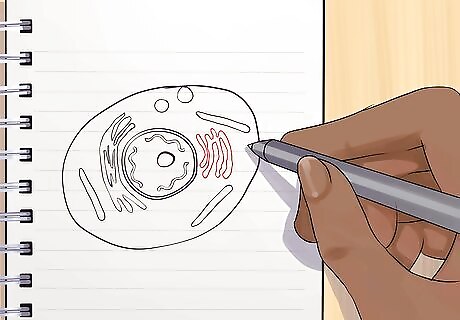
Draw a set of dumbbell-like shapes for the Golgi body. To make the Golgi body (or Golgi apparatus), draw a set of three dumbbell-type shapes that are cylindrical at the center and bulbous at the ends. Each dumbbell should successively increase in size as they get farther from the nucleus and closer to the cell membrane. The Golgi body packages and sends complex molecules around and out of the cell. It does this via vesicles that you can represent around the Golgi body with a few small circles. Capitalize Golgi since it is the name of the discovering biologist.
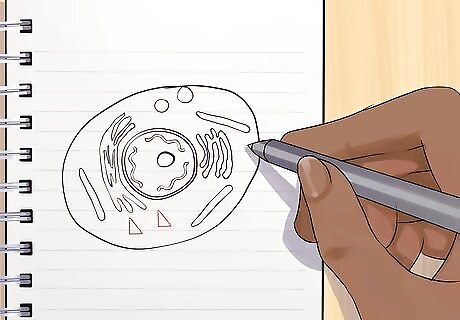
Draw two small rectangles at right angles to represent centrioles. Centrioles help assist with cell division. They are close to but separate from the nucleus. Form the centrioles by drawing two small rectangles perpendicular to each other near the nucleus. The centrioles are paired organelles, which is why you draw two of the rectangles together.
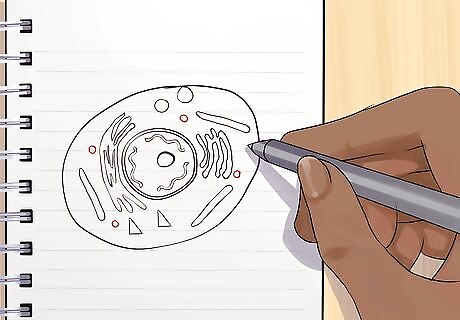
Draw another small circle for the lysosome. The lysosome is like the scrapyard of the cell that breaks down unneeded material to reuse. Represent the lysosome with a small circle at the edge of the cell. Add many small dots in the lysosome to show the digestive enzymes inside, which is called a hydrolytic enzyme mixture. You can place the lysosome near the Golgi apparatus since the organelles are often budded from the Golgi body.
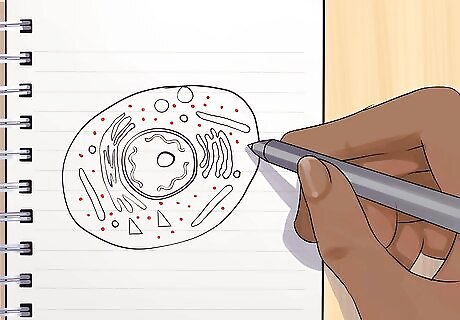
Add dots inside the cell but outside the other organelles to show ribosomes. Ribosomes also float around in the cytosol, which is the cellular fluid inside the membrane but outside of all the organelles. Show the extra ribosomes in the cytosol by making several more dots inside the cell. If you have color-coordinated your drawing, make the ribosomes in the cell, attached to the nuclear membrane, and attached to the rough endoplasmic reticulum all the same color. Cytosol and cytoplasm are often used interchangeably for the fluid in the cell. Though the fluid in the nucleus is nucleoplasm.

















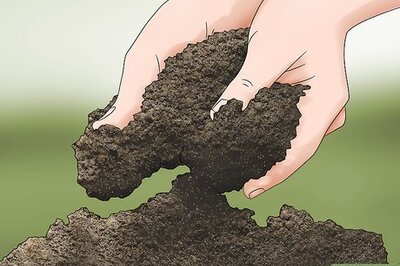
Comments
0 comment